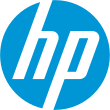
Compaq Computer Corporation was an American information technology company founded in 1982 that developed, sold, and supported computers and related products and services. Compaq produced some of the first IBM PC compatible computers, being the second company after Columbia Data Products to legally reverse engineer the BIOS of the IBM Personal Computer. It rose to become the largest supplier of PC systems during the 1990s before being overtaken by Dell in 2001. Struggling to keep up in the price wars against Dell, as well as with a risky acquisition of DEC, Compaq was acquired for US$25 billion by HP in 2002. The Compaq brand remained in use by HP for lower-end systems until 2013 when it was discontinued. Since 2013, the brand is currently licensed to third parties for use on electronics in Brazil and India.

Zenith Data Systems Corporation (ZDS) was an American computer systems manufacturing company active from 1979 to 1996. It was originally a division of the Zenith Radio Company, after they had purchased the Heath Company and, by extension, their Heathkit line of electronic kits and kit microcomputers, from Schlumberger in October 1979. ZDS originally operated from Heath's own headquarters in St. Joseph, Michigan. By the time Zenith acquired Heathkit, their H8 kit computer already had an installed fanbase of scientific engineers and computing enthusiasts. ZDS' first offerings were merely preassembled versions of existing Heathkit computers, but within a few years, the company began selling bespoke systems, including the Z-100, which was a hybrid 8085- and 8088-based computer capable of running both CP/M and MS-DOS.

The LTE is a line of notebook-sized laptops manufactured by Compaq Computer Corporation, introduced in 1989 and discontinued in 1997. It was the first notebook computer sold by Compaq and the first commercially successful notebook that was compatible with the IBM PC.

Subnotebook, also called ultraportable, superportable, or mini notebook, was a marketing term for laptop computers that are smaller and lighter than a typical notebook-sized laptop.

The LTE Lite was a series of notebook-sized laptops under the LTE line manufactured by Compaq from 1992 to 1994. The first entries in the series were Compaq's first computers after co-founder Rod Canion's ousting and Eckhard Pfeiffer's tenure as the new CEO. The notebooks were co-developed and manufactured by Compaq and Citizen Watch of Japan. They were a hot-seller for Compaq and spanned multiple models, with various processors and liquid-crystal display technologies.

The Digital HiNote was a series of laptop computers manufactured by Digital Equipment Corporation (DEC) from 1994 until 1998 and by Compaq from 1998 until 2002. It was generally positively reviewed by technology journalists. The series consisted of the VP and Ultra models which were based on the i486, Pentium, Pentium MMX and Pentium II. After Digital was acquired by Compaq in 1998, the series was phased out.

The Versa was a line of laptop computers sold by the Japanese electronics conglomerate NEC Corporation from 1993 to 2009. It comprised many form factors of laptops, from conventional clamshell notebooks to pen-enabled convertibles featuring detachable displays, before the line was effectively discontinued in 2009 after NEC pulled out of the global market for personal computers.

The ActionNote was a series of notebook-sized laptops developed by Epson America in 1993. The series was Epson's answer to the small businesses and home office market for laptops and initially ran alongside their corporate-oriented NB series of laptops. The series was segmented into premium and low-cost offerings and included a subnotebook, the ActionNote 4000. The bulk of the laptops' manufacturing was performed by ASE Technologies of Taiwan, with the exception of the 650 and 660 series, which were produced by Compal, and the short-lived initial entries into the 700 series, which were produced by Jabil Circuit. The ActionNote received mixed, mostly positive, reception in its lifespan before Epson America silently left the personal computer market in 1996.
The PB286LP, released in 1989, was Packard Bell's first laptop computer. The laptop featured an 80C286 processor clocked at 12 MHz and 1 MB of RAM, along with a single ISA expansion slot. Packard Bell released the PB286LP in 1989 among a slew of products aimed at the corporate market. Technology writers gave it mostly positive reviews, although some noted its 16-lb weight as hefty and its monochrome LCD as somewhat flawed. Originally only capable of CGA-mode graphics, the laptop was updated in 1990 to support VGA. Packard Bell discontinued the PB286LP in 1991, in favor of more-compact, notebook-sized computers.

Canon Computer Systems, Inc. (CCSI), sometimes shortened to Canon Computer, was an American subsidiary of Canon Inc. formed in 1992 to develop and market the parent company's personal computers and workstations. The subsidiary also assumed the responsibility of marketing Canon's printers and photocopiers, which were formerly sold by other Canon divisions. It went defunct in January 2001.
The Compaq Professional Workstation was a family of workstations produced by Compaq. Introduced in late October 1996, the first entry in the family featured single or dual Pentium Pro processors. Later entries featured Pentium IIs and IIIs; the XP1000 was the only non-x86 based entry, featuring a DEC Alpha processor. Compaq aimed the Professional Workstation at computer-aided design users, software programmers, multimedia designers and financial workers. While workers of those fields primarily ran Unix-based operating systems on workstations at the time, the Compaq Professional Workstation came preinstalled with Windows NT 4.0 Workstation. The line was discontinued in 2002.

DECpc was a wide-ranging family of desktop computers, laptops, servers, and workstations sold by Digital Equipment Corporation. The vast majority in the family are based on x86 processors, although the APX 150 uses DEC's own Alpha processor. The line was DEC's first big break into the IBM PC compatible market.

Librex Computer Systems Inc. was a short-lived American subsidiary of the Nippon Steel Corporation that manufactured notebook computers from 1990 to 1992. Librex had roots in Nippon Steel's Electronics and Information Systems Division (EISD) back in Japan, which starting in 1986 had formed joint ventures with several high-profile American computer companies. Librex was Nippon Steel EISD's first venture in the United States; it also set up Nippon Steel Computer PLC in the United Kingdom to sell identical products. The company's notebooks received praise in the technology press, but a fierce price war in the market for laptops in the early 1990s combined with dwindling profit margins compelled Nippon Steel to dissolve Librex in 1993.

The SupersPort is a line of PC-compatible laptops manufactured by Zenith Data Systems and sold from 1988 to 1993. The first two main entries in the SupersPort line included either an Intel 80286 microprocessor clocked at 12 MHz or an 8088 processor clocked at 8 or 4.77 MHz, switchable. Later entries included the 386SX, 486SX and 486 processors. The SupersPort 286 in particular was one of the top-selling laptops of the late 1980s, although Zenith's position in this segment faltered by the early 1990s.

Kayak was a line of x86-based, optionally dual-processor workstation computers released by Hewlett-Packard from 1997 until the acquisition of Compaq in 2002. The Kayak line was aimed at the scientific computing and professional 3D graphics markets and came preinstalled with Windows NT.

The LTE Elite was a series of notebook-sized laptops under the LTE line manufactured by Compaq from 1994 to 1996. All laptops in the LTE Elite range sported Intel's i486 processors, from the 40 MHz DX2 to the 75 MHz DX4. The LTE Elite was the first notebook-sized laptop to house the AC adapter inside the case itself, eliminating the need to carry an external power brick. The LTE Elite line was replaced by the LTE 5000 series in 1995. Compaq ceased manufacturing the LTE Elite line in March 1996. Due to several recalls and a delayed rollout of the machines, the LTE Elite was overall a sales disappointment for Compaq, with rival Toshiba overtaking them as the top laptop maker in the United States in 1994 and 1995.

The LTE 5000 series was a series of notebook-sized laptops under the LTE line manufactured by Compaq from 1995 to 1997. The LTE 5000 series was Compaq's first laptop with Pentium processors from Intel. The line of computers were co-developed between Compaq and Inventec of Taiwan and were manufactured entirely by Inventec overseas. The LTE 5000 series was the last generation in the LTE line, Compaq replacing it with the Armada line in 1997.

The LTE, LTE/286, and LTE/386s were a series of notebook-sized laptops manufactured by Compaq from 1989 to 1992. The three laptops comprise the first generation of the LTE line, which was Compaq's second attempt at a laptop following the SLT in 1988 and their first attempt at a truly lightweight portable computer. The LTE line proved highly popular—Compaq selling hundreds of thousands of units between the three—and gave way to successive generations of the line, including the LTE Lite, the LTE Elite, and the LTE 5000 series. With its use of industry-standard floppy and hard drive technologies, the LTE was the first commercially successful IBM PC–compatible notebook and helped launch the fledgling PC notebook industry, which had seen earlier attempts fail due to the use of novel but nonstandard data storage.

The Walkabout is a family of notebook-sized laptops introduced by Data General in 1989 and discontinued in 1993. The first entry in the line, simply named the Walkabout, was a battery-powered portable terminal capable of emulating multiple protocols; as well, it contains a rudimentary word processor, an autodialer utility for placing phone calls, and a real-time clock display and timer application for setting reminders. The successor to the first model, the Walkabout/SX, released in 1990, was an architectural redesign allowing the laptop to be used as a general-purpose IBM PC compatible. The penultimate entry, the Walkabout/320, increased its predecessor's i386SX processor clock speed from 16 MHz to 20 MHz, while the last entry in the line, the Walkabout/386SL, replaced the processor with Intel's portable-centric i386SL processor clocked at 25 MHz.

A notebook computer or notebook was historically a laptop whose length and width approximate that of letter paper.























